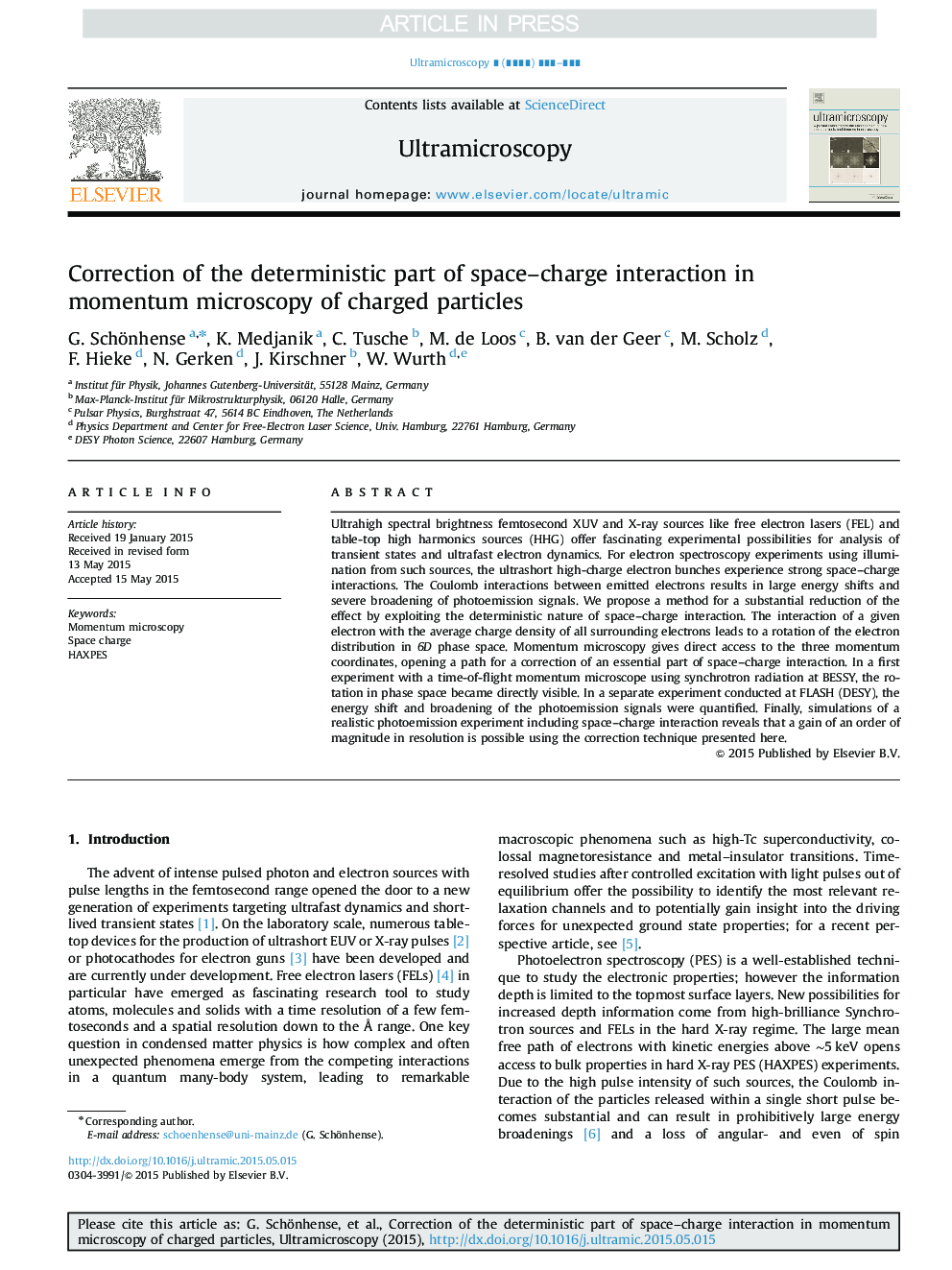| Article ID | Journal | Published Year | Pages | File Type |
|---|---|---|---|---|
| 10672488 | Ultramicroscopy | 2015 | 9 Pages |
Abstract
Ultrahigh spectral brightness femtosecond XUV and X-ray sources like free electron lasers (FEL) and table-top high harmonics sources (HHG) offer fascinating experimental possibilities for analysis of transient states and ultrafast electron dynamics. For electron spectroscopy experiments using illumination from such sources, the ultrashort high-charge electron bunches experience strong space-charge interactions. The Coulomb interactions between emitted electrons results in large energy shifts and severe broadening of photoemission signals. We propose a method for a substantial reduction of the effect by exploiting the deterministic nature of space-charge interaction. The interaction of a given electron with the average charge density of all surrounding electrons leads to a rotation of the electron distribution in 6D phase space. Momentum microscopy gives direct access to the three momentum coordinates, opening a path for a correction of an essential part of space-charge interaction. In a first experiment with a time-of-flight momentum microscope using synchrotron radiation at BESSY, the rotation in phase space became directly visible. In a separate experiment conducted at FLASH (DESY), the energy shift and broadening of the photoemission signals were quantified. Finally, simulations of a realistic photoemission experiment including space-charge interaction reveals that a gain of an order of magnitude in resolution is possible using the correction technique presented here.
Keywords
Related Topics
Physical Sciences and Engineering
Materials Science
Nanotechnology
Authors
G. Schönhense, K. Medjanik, C. Tusche, M. de Loos, B. van der Geer, M. Scholz, F. Hieke, N. Gerken, J. Kirschner, W. Wurth,
